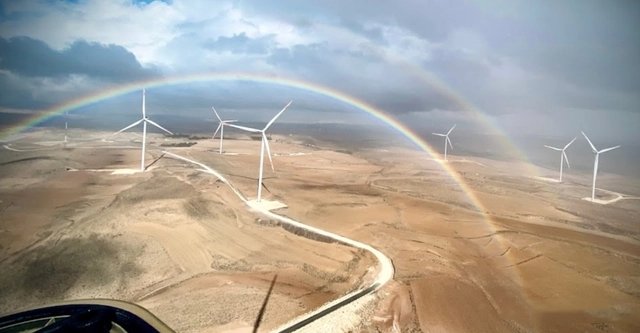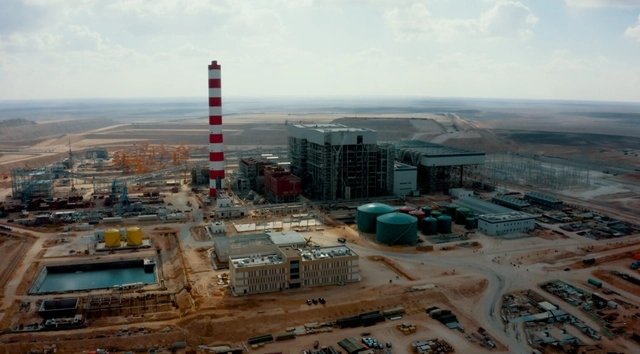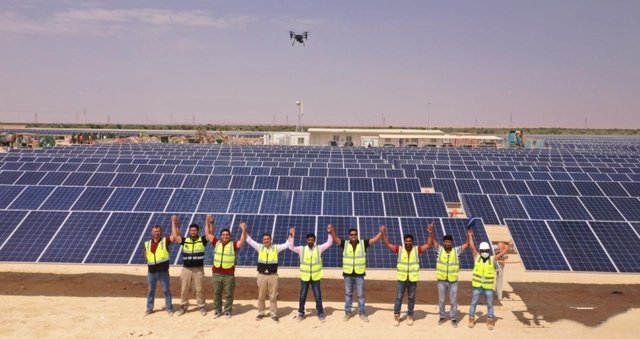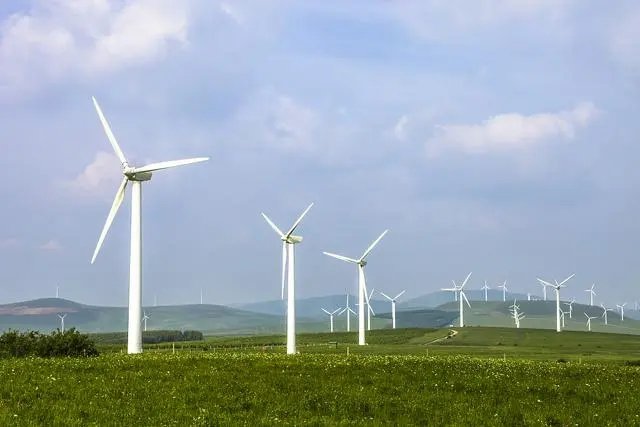
Embarking on a path of necessity and innovation, Jordan, a true Middle Eastern small nation, is making significant strides in the realm of new energy. With a land area of just 89,000 square kilometers, ranking 110th globally, and a population of 11 million as of 2021, placing it 11th in the Middle East and North Africa region, Jordan faces unique challenges as a resource-scarce nation. The country heavily relies on imports for over 90% of its energy consumption, given the acute shortage of major natural resources like oil and freshwater.
Jordan's geopolitical position is equally distinctive, bordering Palestine and Israel, and historically playing a crucial role in accommodating Palestinian refugees and mediating conflicts. The Hashemite monarchy, tracing its lineage to the descendants of the Islamic prophet Muhammad, wields significant religious influence.
In response to the imperative need to reduce energy import dependence and promote economic diversification, the Jordanian government initiated a national energy development strategy in 2007. Since then, it has been actively fostering the growth of new energy, positioning itself as a leading nation in new energy development in the Middle East and North Africa. As of December 2022, the proportion of total electricity generated from new and renewable energy sources exceeded 20%, encompassing wind, solar, and hydroelectric power.

Attalat oil shale power generation project in Jordan
Jordan boasts four key advantages in its pursuit of new energy development:
Rich Wind and Solar Resources: Situated around 30° latitude north, Jordan experiences a mix of subtropical Mediterranean and desert climates, providing abundant sunlight with an average of 316 sunny days per year and favorable wind speeds, particularly in the southern regions.
Ample Land Availability: With approximately 4/5 of its land consisting of deserts and sparsely populated areas, Jordan offers vast, cost-effective land for large-scale renewable energy projects, especially in the expansive southern desert regions.
Government Support: Since 2007, the Jordanian government has consistently formulated energy development strategies, updating them in 2015-2025 and 2020-2030, emphasizing the importance of new energy in overcoming energy shortages and import dependence.
International Funding Support: Jordan's unique geopolitical and political position has garnered substantial support from Gulf Arab states, Western nations like the UK and the US, and international financial institutions.
Setting ambitious goals for 2015-2025 and 2020-2030, Jordan aims to achieve 40% of its energy from domestic sources, with 11% from renewable energy. By 2030, the country envisions 48.5% of its total electricity to come from domestic sources.
As of 2021, natural gas accounted for 73% of Jordan's total electricity generation, while renewable energy increased to 26%. The country's renewable energy capacity reached approximately 2.5 GW, with a significant portion contributed by international developers due to limited domestic technological capabilities.
Major players in Jordan's new energy landscape include UAE's AEP, AMEA Power, and Masdar, Saudi Arabia's ACWA Power and Xenel Industries, Denmark's Vestas, and Germany's DEG. The involvement of international development finance institutions has been substantial, with over $3 billion in funding channeled into Jordan's renewable energy projects.
Jordan operates on a single-buyer model, with the National Electric Power Company (NEPCO) as the exclusive purchaser of electricity. While traditional project tendering methods exist, the government is open to flexible negotiation models in cases where investors can address key project issues.

Jordan Husainiyah 50MW Photovoltaic Power Generation Project
Noteworthy projects include the 51.75 MW wind power project, a groundbreaking initiative in the Middle East utilizing Islamic finance. Another significant venture is the 50 MW Husainiyah solar project, the first utility-scale solar project in Jordan using locally produced solar panels.
Looking ahead, Jordan sees opportunities in utility-scale wind projects, Power to X initiatives, electricity infrastructure upgrades, and even small modular nuclear reactor projects to achieve sustainable and diversified energy development.
While Jordan may not match the market size of Saudi Arabia, the UAE, or Egypt, its pragmatic approach to new energy development sets it on a unique trajectory. The nation is poised to seize future opportunities in the renewable energy sector, driven by its commitment to energy security, efficiency, and environmental sustainability.

OWELL Industries: Leading the Way in Sustainable Power Solutions
In a world where environmental concerns and sustainable development are paramount, OWELL Industries stands out as a pioneering R&D enterprise committed to providing innovative power solutions to global markets. At OWELL, we are dedicated to renewable energy and sustainable development, and we're making a difference by designing and delivering cutting-edge wind and solar power systems and related components.
Our mission is clear: to contribute to a greener, more sustainable future. We take pride in our role as a driving force behind renewable energy, and our efforts align perfectly with the changing landscape of the global energy sector. With a strong focus on research and development, OWELL Industries is at the forefront of creating solutions that harness the power of wind and solar energy.

Quick Link:
OWELL 5kw horizontal axis permanent magnet generator wind turbine
OWELL 10kw permanent magnet generator horizontal axis wind turbine